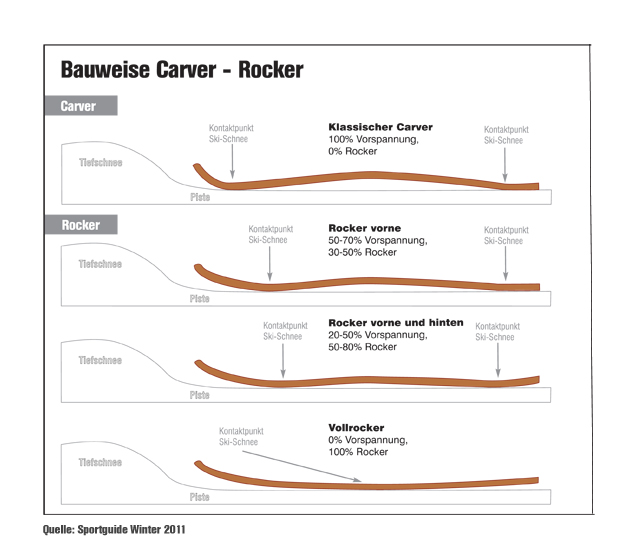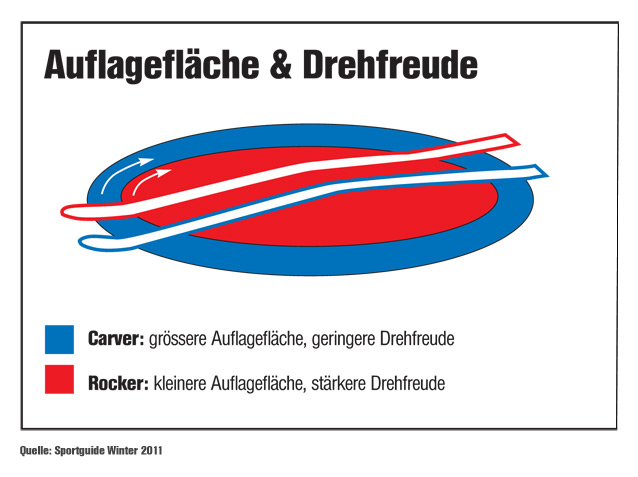Rocker refers to a stronger bend of the ski shovel or both ski ends than exists in a ski with classic pretension. Similar to a surfboard, the shovel or both ski ends protrude more upward. Each ski manufacturer offers different rockers that vary in mass, but the principle is the same. The term can be confusing at first, as one knows the term "rocker" mainly from the motorcycle scene, but in English "rock" also means "seesaw" or "swing". This conceptual derivation makes sense, after all, the rocker gives the ski somewhat oversized thought the shape of a seesaw.
The effect of the rocker is actually obvious. The rocker gives the ski a stronger lift behavior in the snow, which is clearly noticeable when the snow becomes deeper and powderier. While skis with classic preload tend to get stuck in deep snow or on fresh snow passages, which can lead to falls, the rockered ski glides over such snow surfaces more easily.
Another advantage of the rocker is easier turn initiation. The rockered ski has a shorter contact surface of the ski and a shorter edge length due to its stronger bend, which reduces friction and edge resistance and facilitates turn initiation. Rocked skis therefore turn more easily even on hard slopes. As a disadvantage, the rockered ski logically also shows less edge grip and control, especially on hard slopes.
While ski models designed for deep snow - so-called freeride skis - have been using this technology for some time, models with rockers for classic piste models have only begun to be fitted for about 10 years. The trade's initial resistance to the new technology has now subsided. This development was led by the American ski brand K2, followed by the ski brands Rossignol and Dynastar. Today, most piste models of all well-known ski brands have rockers.



